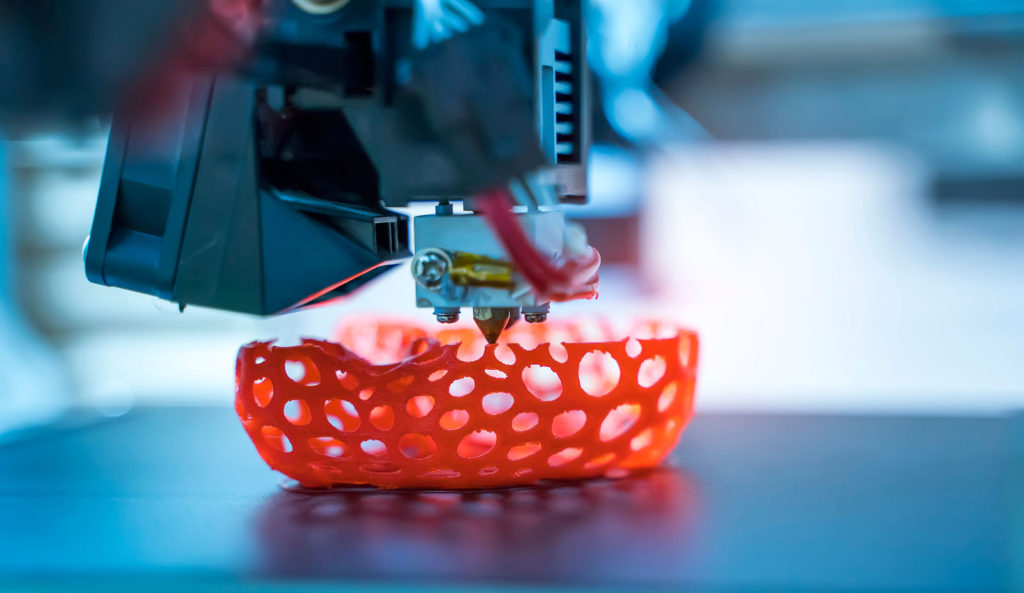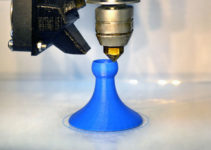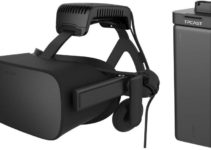
So, you’ve seen all the fuss about 3D printing, and you’re looking to jump on the bandwagon. Maybe you want to create a cool case for your Raspberry Pi you want to place in your living room so you can play emulators. Are you new to the 3D printing world and you’re having trouble using your very own 3D printer? Do you want to optimize your 3D printer, so it prints faster and more precise?
If your answer to any of these questions is yes, then you’ve come to the right place. In this article, we’ll give you a brief overview of different 3D printing types and how to use a 3D printer efficiently.
So, let’s start with what is 3D printing and what types of 3D printers currently exist.
3D Printing and 3D Printer Types
Let’s start by defining what a 3D printer is. A 3D printer is a device that allows you to create three-dimensional objects that you’ve previously designed on a computer. 3D printers come in a wide range of shapes, sizes, and types, but at their core, they are all computer controlled additive manufacturing machines. This means that they work by adding one layer of special polymer on top of another to make three-dimensional objects.
3D printing is not by any means a new concept. Back in 1984, a person named Charles Hull invented a process he called stereolithography. This process allowed big companies to create 3D model prototypes from pictures or blueprints before they decided to invest more heavily in manufacturing the real product.
In a way, 3D printers are akin to CNC (Computer Numerical Control) machines. However, compared to CNC machines, 3D printers are extremely slow because it takes a couple of hours for a model to be printed while a CNC machine can make thousands of parts.
However, 3D printers are relatively inexpensive and allow anyone who has a computer or a USB stick on hand to make 3D models. They allow makers and designers to turn a vision to reality in only a couple of hours. Moreover, they allow for rapid iteration of the design, and they are able to create complicated designs with ease. In other words, all you have to do is press a button, and wait for the magic to happen.
What are the different types of 3D printers?
To understand how 3D printers work and how you can design objects for them, you have to be familiar with different types of 3D printers that are on the market.
Even though the materials used and printing techniques vary widely, all 3D printers work by fusing layer by layer of material until they make a complete object.
There are a couple of 3D printer types: some are best suited for making large objects, others allow you to print multicolored objects, and some require zero configuration. We made a post about the best 3d printers, you can check it out here.
Here are the most common types of 3D printers you’ll come over.
Fused Deposition Modeling (FDM) 3D Printers
FDM is the most common type of 3D printing. This process includes melting down the material (ABS or PLA plastic) by the printers head an extruding it onto the printer bed. The extruder head lays the material layer by layer until it builds up a complete 3D model.
These type of printers are the most common you’ll find. They are quite inexpensive and easy to set up. The precision of FDM 3D printers depends heavily on the quality of driver motors and the extruder head.
Because the model is built layer by layer, it tends to be weak along its horizontal cross-section. Moreover, if you want to build models that have an overhang, you’ll have to build support structures to hold it up.
Some FDM 3D printers feature multiple extruder heads which allows you to print objects out of multiple materials, or in multiple colors. This type of 3D printer also allows you to use one head to build supports for the overhang out of special material that is soluble in special chemicals.
Stereolithography (SLA) 3D Printers
Like we mentioned before, stereolithography is the oldest type of 3D printing. This process involves using an ultraviolet laser to solidify liquid resin. While FDM 3D printers make objects out of layers, the UV laser beam on an SLA printer creates models by slicing parts of the liquid resin to cure it layer by layer, thus creating a 3D model.
These type of 3D printers are quite fast because they use UV lasers. Unfortunately, the resin is very expensive and needs to be stored in special containers because it’s photocurable. This means that if you leave this special resin out in the sun, it will solidify in a matter of hours. Furthermore, this resin is very brittle, which means it’s not good for anything else but rapid prototyping.
Just like FDM 3D printers, SLA printers require support structures for objects that have overhangs. They are also limited when it comes to materials, you can’t combine multiple resins to create a 3D model. Their biggest strength lies in the ability to print very complex, delicate models.
Selective Laser Sintering (SLS) 3D Printers
SLS 3D printers are very similar to SLA 3D printers in the way that they work. Both of these 3D printer types use lasers, where they differ is the material. SLS printers use powdered material instead of photocurable resin.
The printing process is similar to those in SLA printers. The laser cures the powdered material layer by layer until the object is complete. The biggest advantage these type of 3D printers offer is that you don’t have to use support structures to build objects that have an overhang. The only tradeoff is that they are slower than the SLA printers.
There are very few consumer-oriented SLS printers, and you’ll mostly find them in the industry because they require a lot of power and are very expensive.
Laminated Object Manufacturing 3D Printers
LOM printers work by using a laser knife to cut slices of the 3D model out of sheets of material, usually plain paper. Each sheet is pulled over the previous and cut. When a sheet is cut the next sheet is glued to it. This way the printer creates stacks of sheet material cut and glued together.
LOM 3D printers have extremely low production cost because they use plain paper as raw material. The models printed in this way are very flexible and strong. Unfortunately, because the model is built out of paper it usually wears out quickly.
These type of 3D printers are best suited for building large objects with minimal details. You will also have to do a lot of cleaning up after the printer is finished because they generate a lot of waste and you’ll also have to touch up the finished model because it’s not very precise.
How to Set Up Your 3D Printer
Now that you’re a bit familiar with the types of 3D printers and how they work, let’s go over how you should set it up. We’ll give you a step by step guide on how to set up a 3D Printer that uses filament as raw material because they’re the most common.
Step 1: Unbox Your 3D Printer
This is a pretty obvious step. Carefully remove all the contents of the package the 3D printer came in. This includes all the packing materials, including tape and zip ties.
If your model comes in the form of a DIY kit, we recommend you follow the assembly instructions by the letter.
If your 3D printer comes prebuilt, then all you have to do is plug it into your power outlet and connect it with your computer.
Step 2: Prepare the printing bed
In this step, you have to make sure your printing bed is ready.
The filament won’t stick to the bed by itself so you have to apply some kind of adhesive to it. You have several options when it comes to adhesive: you can use blue painters tape, hairspray, glue sticks, or use a specialized 3D printing surface like BuildTak.
Step 3: Heat up the 3D Printer
After you’ve prepared the printing bed, it’s time to heat up the printer and load the filament.
If you’re a first time user, we recommend you use PLA filament because other types have specific heat requirements for adhesion to the print bed and maintaining the quality of the print.
Depending on the type of PLA you use, we recommend you keep the extrusion nozzle temperature between 195 and 235 degrees Celsius.
The printing bed should be set at around 60 degrees Celsius for PLA plastic. Once everything is heated up you can press the start button on your printer and wait for it to finish.
A word of caution: if the temperature of the printing bed exceeds 90 degrees Celsius you are risking breaking your 3D printer and even causing it to light on fire!
Step 4: Loading/Unloading Filament
Some 3D printers have an option in their controller menu for loading and unloading filament. Before you start loading/unloading, make sure the extruder isn’t already loaded with the filament. If there is filament in the extrusion head, remove it first.
If your 3D printer has an option for removing the filament, use it and observe it until it unloads from the extrusion head.
If your printer doesn’t have an unload option, heat the extruder to a temperature slightly above 200 degrees Celsius then firmly grab the filament and push it into the extruder while applying pressure to the release lever. After some filament has flown out of the muzzle, firmly pull out the filament from it while still applying pressure to the release lever.
If you got a 3D printer that has a loading option we recommend you use it. If not, the loading process is similar to the unloading process. Heat up the extrusion nozzle, press on the release lever and firmly push in the filament. Once some filament has flown out of the extrusion nozzle, you’re done.
Step Five: Leveling the Printing Bed
If you’ve purchased a 3D printer that comes with a self-leveling printing bed, select the appropriate option in the menu and watch it level itself. If not, then you’ll have to take a few steps.
First, make sure the screws that hold the printing bed in place are as tight as they can be in all four corners. Then, select the Home the Z-Axis option in the printer’s control menu, and then select the Disable Steppers option in the same menu. Now fold a sheet of paper so you can place it between the nozzle and the bed in order to prevent any damage. Move the nozzle within 1 inch of each of the corners and loosen the screws until the nozzle touches the paper.
Step Six: 3D Print
You’re finally ready to print. Find a design you want to 3D print and press start!
Designing and Printing Your First 3D Model
Like we mentioned before, 3D printers allow designers to quickly go from an idea to a physical model. If you want to start making your custom models, you’ll need to install one of the 3D design applications on your computer. Once you’ve finished designing a model you have to import the design into a special 3D printer software that will slice up the model and send the list of paths and directions used to create the model.
You can use a wide range of CAD applications to design your models, but most of them aren’t free nor cheap. If you’re a beginner we recommend you try out either Google Sketchup or Tinkercad. Google Sketchup isn’t able to export files for 3D printing, so you’ll have to download an addon called Cadspan.
If you’re new to the CAD software, we recommend you search the web for a good tutorial. Typing in the term “CAD for beginners” in Youtube will bring out a plethora of videos you can check out. You can check out a video from All3DP titled “Getting Started in Tinkercad: A Tutorial for Complete Beginners’, it will quickly get you up to speed.
What You Should Keep in Mind When Designing a 3D Model
When designing a model you want to 3D print, you should follow a couple of guidelines and constraints.
One of the most important things you should keep in mind while designing your model is the build face. All 3D printers start printing from the print bed, so keeping in mind what face the part is being printed from is very important. While determining the part orientation is different from printer to printer, designing to optimize that orientation will save you time and material.
Optimizing Your 3D Design
If you orient your parts correctly, you can reduce the amount of support material you’ll need, and in turn, reduce the print time. Support material can be hard to remove and leaves rough surfaces on the finished model, which isn’t ideal if you want to make your model look like a finished product. By correctly positioning the parts of the model in the CAD application, you will save yourself time on sanding down and polishing the finished model.
Keeping Part Strength In Mind
Most 3D printed objects tend to break up along the cross-sections of the part that is parallel to the printing bed. 3D printers lay down material layer by layer and layers sometimes won’t stick together properly. This means that part of the finished model can break if force is applied to them. To avoid this, we recommend you design your model in such way that the direction of the force isn’t along the cross-section.
Keeping the Contact Surface in Mind
Most FDM 3D printers print arts by sticking them to the print bed. If you orient your design in such a way that there is very little contact between it and the print bed, you are in risk of part falling away and ruining your entire print. To avoid this we recommend you orient your 3D model so that the part with the greatest surface area is the one that starts printing first.
3D Model Overhang
Like we mentioned before, all FDM and SLA 3D printers require support structures to hold up flat overhanging parts of the model. Most 3D printers can handle 45 degrees of overhang without the need for a support structure because they print parts layer by layer. To avoid using support structures, note where low-angle overhangs are and re-orient the part. Alternatively, you can make sure that the overhanging parts are supported by other features of the model, like angled overhangs or arches.
3D Print
This about covers everything you should know about how to use a 3D printer. Now you can launch a CAD application of your choice and start designing. If you’re not up for designing your own models you can check out some of the many 3D model repositories on the internet.
What are you waiting for? Print on!



No Responses